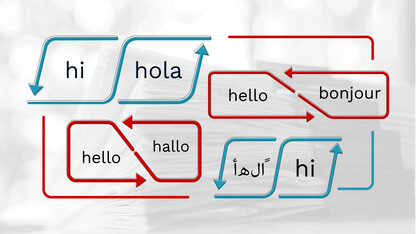· 3 min read
Researchers show environment can neutralize lethal proteins

Botching a few folds might transform an origami cow into a deer or sheep. When cellular proteins do the same, they can trigger fatal neurodegenerative diseases that turn the brains of these mammals into dysfunctional sponges.
Yet a new study suggests that these misfolded proteins – the so-called prions responsible for chronic wasting disease, among others – can be degraded by the rain and sun that fall upon the soil these prions often call home.
Researchers from UNL, Creighton University and Colorado State University found that watering and drying soil as few as 10 times can reduce the presence of prions and curb their ability to infect normal proteins in brain tissue.
These effects are more pronounced when prions attach to soil before exposure to the watering-drying cycles, the study reported.
“We know environmental prions remain infectious, but there is little information about how natural processes influence soil-bound prions,” said co-author Shannon Bartelt-Hunt, associate professor of civil engineering at UNL.
“Wetting and drying can affect soil properties, and drying can also influence protein structure. We were interested specifically in the behavior of the protein attached to surface soils, so we wanted to evaluate a process that routinely occurs in the environment.”
Prions can enter the environment through the blood, saliva, waste or decomposition of their hosts. Once embedded in soil – where they can survive for years – they jump to new hosts through ingestion or inhalation. Much like viruses hijack cells to replicate themselves, prions multiply by inducing healthy proteins to refold into dysfunctional shapes.
The researchers discovered that the environment’s ability to disrupt this process depends partly on soil and mineral composition, with clay and silt neutralizing prions better than sandier soils. This knowledge could help determine where the spread of prion diseases is most likely to occur, Bartelt-Hunt said.
“In a few soil types we tested, the soil protected the protein and we observed no degradation,” Bartelt-Hunt said. “This might mean that areas with certain soil types would be more or less susceptible to prion contamination. For the soils that protected the prion protein from degradation, prions could accumulate in soil, increasing the potential for transfer to other animals.”
The study further suggested that the type of prion infection may moderate environment-protein interactions. Chronic wasting disease – which afflicts deer, elk and moose – showed greater susceptibility to the watering-drying cycles than did a prion strain that targets mink.
Though the team has yet to determine how the cycles affect prions, Bartelt-Hunt said it’s embarking on new research to investigate the mechanisms underlying the new study’s results.
“We don’t know if drying and wetting affected the protein itself, the soil structure, or both,” said Bartelt-Hunt. “We are currently working to better understand how the prion attaches to soil. We also are evaluating if other natural environmental processes, such as freezing and thawing cycles, can influence the protein.”
The team’s study appeared in the Feb. 9 edition of the journal PLOS Pathogens. Bartelt-Hunt’s co-authors included UNL’s Qi Yuan, recent doctoral graduate in civil engineering; Creighton’s Jason Bartz and Thomas Eckland, associate professor and doctoral candidate in medical microbiology and immunology, respectively; and Colorado State’s Glenn Telling, professor of microbiology, immunology and pathology.
The authors received funding from the National Science Foundation, under award number CBET-1149424, and the National Institutes of Health, under grant numbers P20 RR0115635 and C06 RR17417. The content is solely the responsibility of the authors and does not necessarily represent the official views of the National Science Foundation or the National Institutes of Health.







